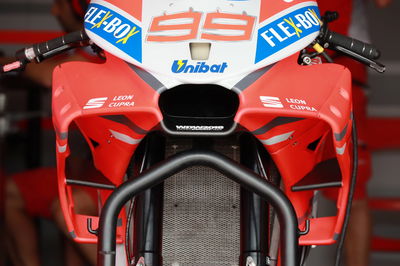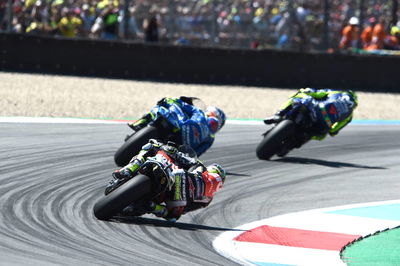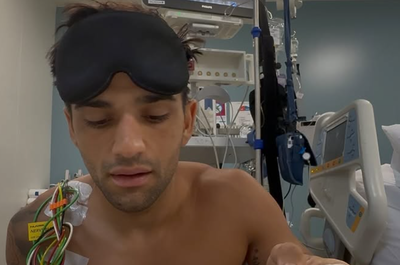Stricter rules for MotoGP wings confirmed
MotoGP has officially agreed to a set of stricter regulations governing the use of aerodynamic devices in 2019.
As reported in May, the MSMA (Manufacturers' Association) chose not to ban 'wings' completely, but any such attachments must now fit within a new set of 'limits and dimensions'.
Each fairing can also only be used in one configuration, with no significant parts removed or replaced.

MotoGP has officially agreed to a set of stricter regulations governing the use of aerodynamic devices in 2019.
As reported in May, the MSMA (Manufacturers' Association) chose not to ban 'wings' completely, but any such attachments must now fit within a new set of 'limits and dimensions'.
Each fairing can also only be used in one configuration, with no significant parts removed or replaced.
However, 'the present designs will still be allowed' within the new rules.
'Effective Season 2019
'Aero-Body Regulations:
'Aero-body design guidelines have been released by the Technical Director and new aero-body dimension limits and limitations on the combination of different areo-body parts have been introduced.
'As a result, the present designs will still be allowed, but it won’t be possible to remove/swap significant aerodynamic parts.
"Furthermore, the aero-bodies approval process will be based on previous seasons case-history and made more objective.'
The current rules ban the use of traditional wings but allow downforce devices ('attachments') as long as they are 'integrated' within the fairing, for safety reasons.
However, no dimensions are currently specified and it is left to MotoGP Technical Director Danny Aldridge to decide whether a fairing is legal.
This has been further complicated by a longstanding rule that allows material to be removed from the fairing.
Manufacturers have used that rule to generate several different downforce specifications from a single fairing, by removing or replacing wing sections to find an optimum set-up for each circuit.
That loophole has now been closed and it is expected that each rider will have one 'wing' fairing and one normal fairing to choose from in 2019.
"You won't see fairings change from race-to-race as attachments and material are taken off and on," Aldridge told Crash.net in May.
"What you see at the first race will be it, until they do the one in-season [fairing] upgrade."
Alongside the new fairing dimensions will be a booklet from Aldridge explaining what is and isn't allowed.
"It's so the manufacturers have got something to refer to. What's been happening is that I'd tell one manufacturer, 'you can't do that'. Then another manufacturer would come to me with the same question.
"We'll put all that information into a booklet and all the manufacturers will see they are not allowed to use that concept, but without stating which manufacturer has approached me to ask the question."
MotoGP fairing designs have broadly morphed into either a Ducati-style box shape, or Yamaha style 'rail'.
"I don't think you'll see a lot of difference from what we have now," Aldridge said.
"If there is a difference [in fairing design next year] it's probably because they've found something better."
The other technical amendment for 2019 is the introduction of more robust CAN connections which, in partnership with the new unified inertial platform (IMU), will improve 'electronics security'.
'Organizer CAN Protocol and Connection
'A new and more robust unified CAN connections layout for the MotoGP machines has been agreed, and some limitations imposed on the information exchange among the various CAN devices (e.g. the inertial platform) and the ECU.
"This, together with a unified inertial platform, represents a considerable step-up in electronics security.'
In terms of the sporting regulations, from 2019 it will be possible for the winner of the Red Bull Rookies Championship to compete in the Moto3 World Championship even if they are under the minimum age of 16.
As with the Moto3 Junior World Championship, the minimum age for the Red Bull Rookies winner will be set at 15.












